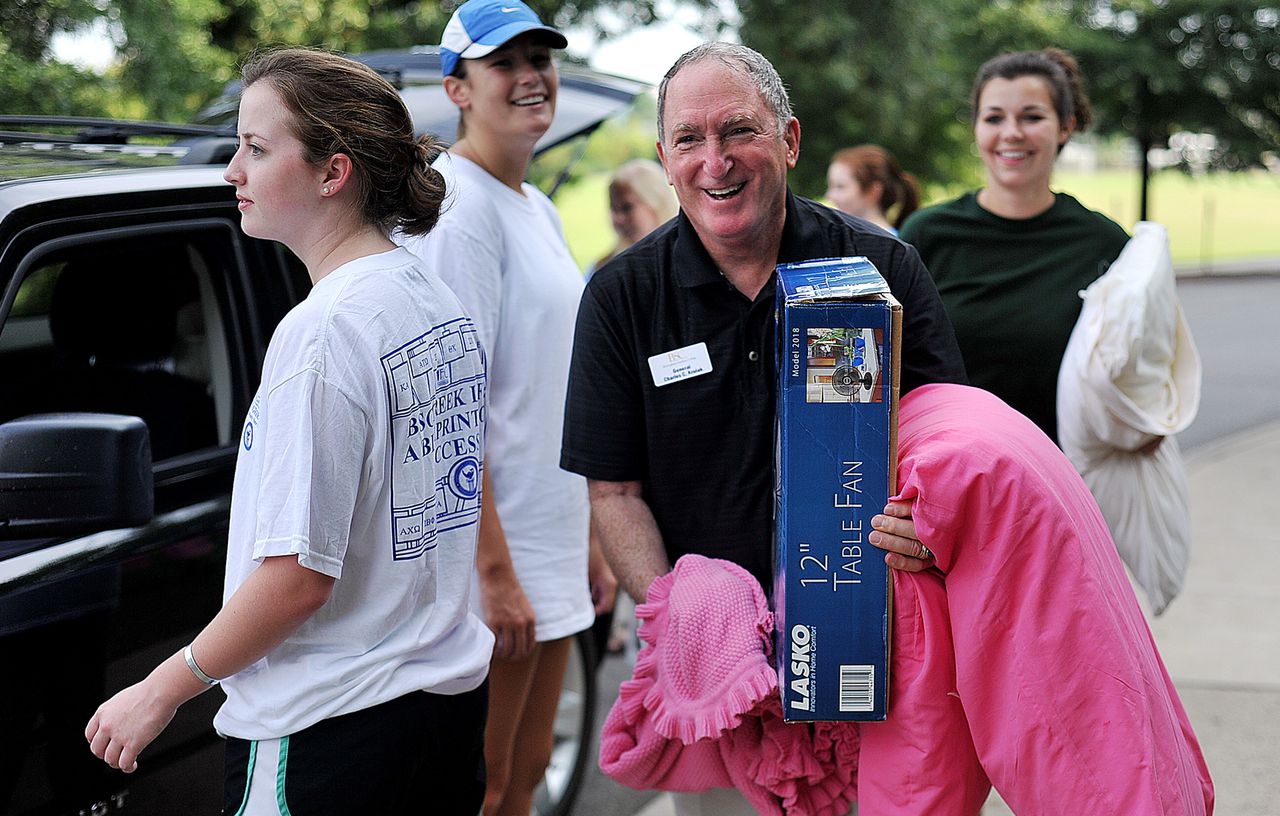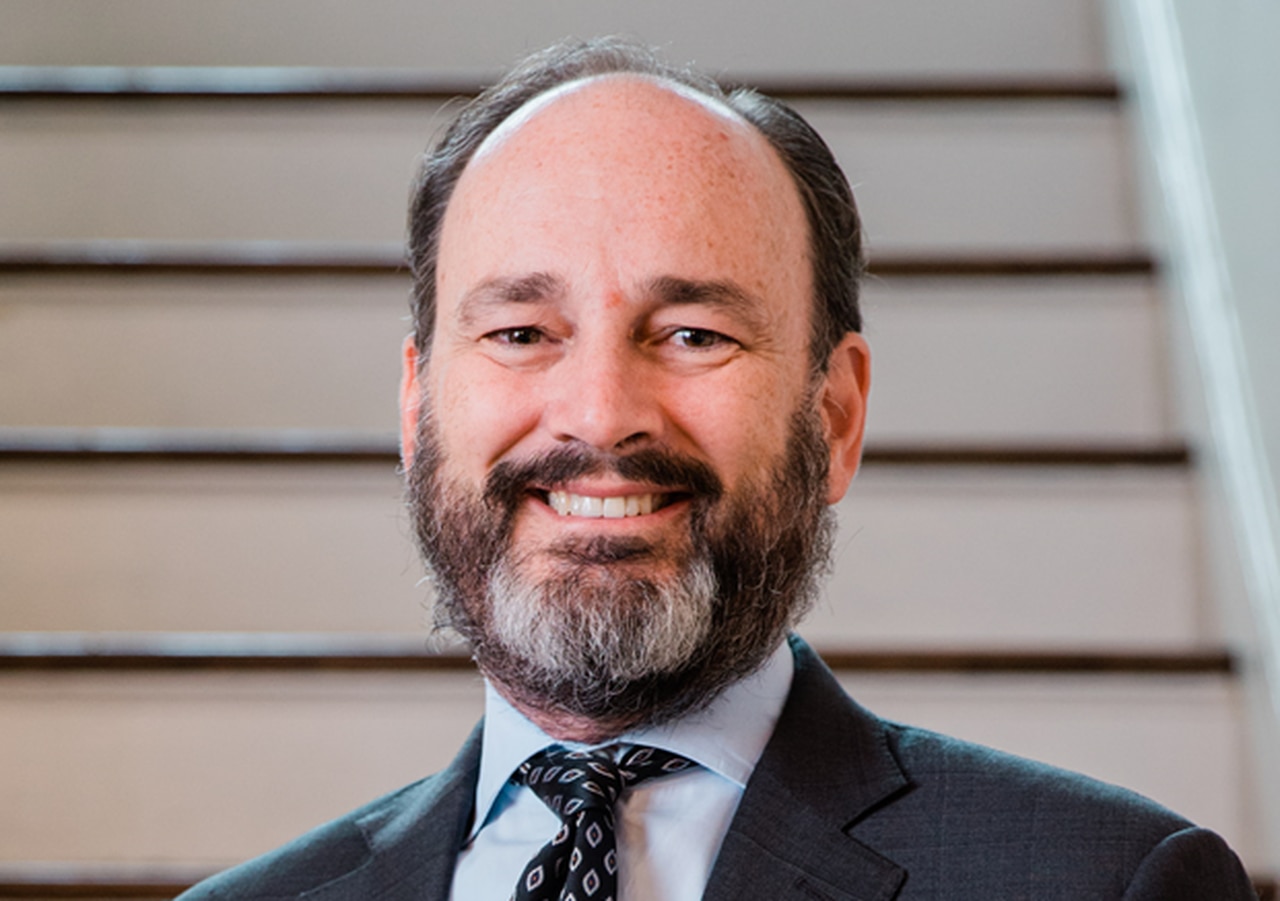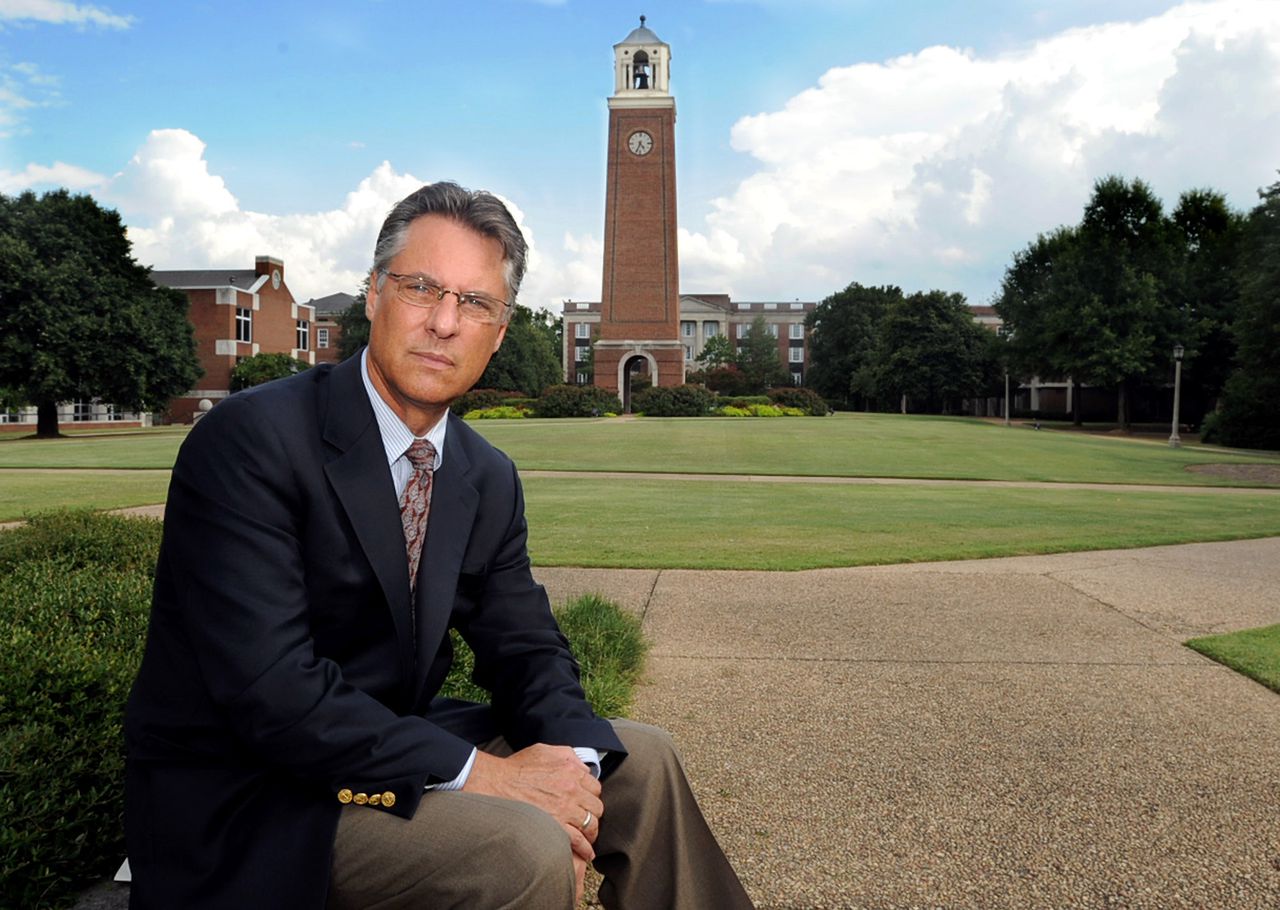Whitmire: After years of decline, BSC struggles to find a way forward
This is an opinion column.
Past the front gate at Birmingham-Southern College, the Welcome Center was built to look like a stately manor. Designed by renowned Alabama architect Bobby McAlpine in 2006 and built a year or so later, it’s one of the many campus features that came along after I graduated from “the Hilltop.”
“The Welcome Center will be a beautifully designed facility that will function as the ‘first impression’ and front door to literally thousands of students and guests,” then-college president David Pollick told the alumni magazine in 2006. “As the adage goes, ‘you only have one chance to make a first impression.’ And we want ours to be a welcome of hospitality and quality.”
From the street, the building casts an intriguing, if not inviting, image.
Up close, is something different.
It has become a fact of life in college recruitment that most prospective students will decide whether they like a school within minutes of arriving on campus. A little way down I-20/59, the University of Alabama hired a consultant to model that campus after Disney World’s best practices. Their research showed 20 minutes was the magic number for how long it took for most students to make up their minds, former chancellor Robert Witt told the Atlantic in 2021.
Appearances could make or break a college.
And here, in Birmingham, is one college that appearances broke — not because it didn’t try but perhaps because it tried too hard.
BSC could soon close, the current college president Daniel Coleman has warned. Coleman is seeking $37 million in public support while he raises funds to replenish the college’s endowment. For about an hour this month, we talked through how the college had gotten into such desperate shape, what Coleman hopes can be done to fix it and how, if given the chance, he intends to ensure no such thing ever happens again.
But first, I had to find the right door.
At the welcome center, there are five sets of what look like French doors, but only one will let you through from the outside.
As it turns out, it was the one with the hole in it.
Near the ground, about where you’d kick a door if you lost your temper, the wood had decayed to where daylight is visible from the other side.
This is the door most prospective students will walk through when they visit the college.
And it’s broken.
Deceptive appearances
I arrived at BSC as a freshman in 1995 to a school known more for its academics than its aesthetics. The campus was populated with drab mid-century, utilitarian buildings with lots of flat roofs, faintly green fluorescent lights and cinder block walls.
Under the last years of long-time president Neal Berte, who retired in 2004, the college began an ambitious makeover, replacing its student center and science facilities, renovating its art building and adding a new fitness center.
Landscaping crews seemed to be on a non-stop mission to terraform campus, ripping up shrubs and replacing them with new shrubs and giving few any opportunity to actually grow. In the middle of the academic quad, the school built a bell tower that the student paper mocked for attempting sexual relations with the sky.
Yeah, I got called to the provost’s office for that one.
All of these things cost money. But for the bell tower and the incessant landscaping, though, these improvements seemed sensible or necessary.
But soon the college’s spending spree would accelerate further and at no more of a dangerous time.
Today, Coleman is careful not to place blame for the college’s predicament on any one person. To do so wouldn’t be accurate, he says. But tax records and disclosures to the bond market show the college’s financial decline happened primarily under one college president, David Pollick, who served from 2004 to 2010.
Under Birmingham-Southern College President David Pollick the college added new amenities, including a water feature in the middle of the Great Recession. In three years the college’s endowment plunged from more than $113 million to $54 million. (The Birmingham News / Mark Almond)BN FTP
His spending on the campus’s facilities and appearance took capital investments further than Berte. The college built two new dorms, the welcome center and a stadium for football — something the college hadn’t had since World War II.
And then there was the pond.
“The pond is a good lightning rod because it’s completely useless,” Coleman says.
During the worst economic downturn since the Great Depression, the college added a major water feature that hadn’t existed before — all for the sake of looking pretty.
Pollick took a build-it-and-they-will-come approach, hoping to grow the student body and bring in more revenue.
It was a gamble. It didn’t work.
“It was a situation of heads, I win, tails the college loses, and he did it,” Coleman says. “That was a lot of the problem. Allowing him to do it is also another problem.”
Under Berte, the college had often wooed potential donors by making space for them on the college board. By the time Pollick got there, the board consisted of about 70 seats — far too many, Coleman says, for the sort of checks and balances to prevent what happened next.
While Pollick had an eye for aesthetics, his administration mismanaged the college’s finances.
Pollick blamed the college’s problems on a mix-up in how it calculated financial aid. Later disclosures and discoveries showed the colleges financial problem was messier than one mix up.
Some of the college’s financial failings were undoubtedly the result of the recession itself driving down the value of its investments. Regardless, the college’s tax forms and disclosures to bond markets show the bottom-line effects.
In three years the college went from having more than $113 million in its endowment to $54 million.
The meager endowment has been the center of the college’s problems, Coleman says, and the college’s public disclosures, in tax records and filings with bond markets, appear to support that. Most institutions draw 5 percent a year from their endowments — a rate that allows market gains to keep pace over time, he says.
The college began drawing a lot more than that. Now it has little left to draw.
BSC was eating its seed corn.

Birmingham-Southern College President Gen. Charles C. Krulak achieved something that should have been impossible — cutting costs while improving morale. It didn’t last long after he retired. (The Birmingham News/Tamika Moore) BN FTPBN FTP
Enter the General
In 2010, trustees asked Pollick to resign and gave him a generous severance as an inducement.
But soon after, the college caught a lucky break. In a moment that seemed like divine intervention, the college won the interest of a man who’d be its next president — former U.S. Marine Corps Commandant Charles Krulak.
Krulak said he visited the college while passing through and fell in love with it on first sight. A diminutive, energetic man, Krulak’s experience as one of the country’s top military leaders inspired confidence among board members, and eventually faculty, students and alumni, too.
At BSC, Krulak put his leadership skills toward cutting costs and improving morale — seemingly mutually exclusive goals he nonetheless achieved. The general and his wife moved into the student apartments and he frequently surprised students studying for exams with cookies and other treats late at night. And he declined a salary his first two years.
And BSC had what ailing brands need — a good comeback story.
Krulak renegotiated debt payments so they were no longer an existential threat. Financial records show the general stabilized the college.
But stabilization is not the same thing as recovery, and alumni were left with the impression the college’s problems had been fixed.
The endowment rose to $61 million but no higher, according to bond market disclosures.
Krulak retired and the endowment soon began to fade.
In a bid to win publicity, the college reset its tuition price point to match what everyone knew — almost no one pays full price. In higher education the sticker price is the starting point for each student’s negotiation.
As Coleman points out, a Google search now of almost any college or university will yield the true price in the right-hand column — a figure the search engine calls “average cost after aid” — publsihed by the U.S. Department of Education.
The price reset attempted to win fans through truth in advertising, and while it grabbed a few headlines in education trade publications, it also had an unintended effect.
“The real psychology is this,” Coleman says. “If the tuition at Birmingham-Southern is ($20,000) and the tuition of Rhodes is ($40,000) and a young person gets accepted by both — Birmingham-Southern says you can have $2,000 in financial aid and Rhodes says you have $18,000 in financial aid.”
Rhodes would seem like a better deal, even though BSC would be cheaper. Potential students associate the sticker price with the educational value, even if that number bears no relation to what anyone really pays.
In 2018, the college’s third president in four years retired. With few takers, the board turned to one of its own members, Coleman, an innovator in high-frequency trading who had recently returned home to Birmingham. Coleman had taken classes at BSC and taught some, too.
His out-of-nowhere arrival echoed that of Krulak and gave some assurance that someone with a record for business success was at the wheel.
Coleman identified the meager endowment as a liability for the college.
“We’re not going to grow our way out of this problem,” Coleman says. “We’ve got to fix the endowment.”
Most successful liberal arts colleges the size of BSC have endowments large enough to subsidize 20 percent of the college’s costs, Coleman says. With costs already crammed down, that meant it needed an endowment of at least $200 million to cover the difference between revenue and expenses.
It had $53 million.
The college was surviving with no backstop for emergencies. Coleman began a campaign to rebuild it.
Less than a year into his tenure, the pandemic hit.
In the last three years, the college’s enrollment dropped from more than 1,200 students to slightly more than 900. That’s about $6 million a year less in tuition revenue, which had to be covered by the already depleted endowment.
The college had hit the emergency it wasn’t prepared for.

After the college went through two presidents in three years, trustee Daniel Coleman, accepted the position. He says he identified quickly the college’s root problem — the depleted endowment.
Coleman’s rescue plan
In its 167-year history, Birmingham-Southern has nearly gone out of business at least six times, Coleman says. If it survives through this one, he wants to ensure such near-death experiences never happen again.
To assure donors they weren’t throwing good money after bad, the college created a new foundation with strict rules for how much of its funds could be used any given year. The school would raise $200 million and only be able to withdraw 5 percent each year, with restrictions in place to prevent any more than that.
Also, the college wouldn’t accept funds from donors until it had $100 million in pledges.
So far, the school has about $45.5 million in pledges, he says, and Coleman hopes to raise the rest within the next three years.
If there are three more years.
Without some sort of intervention to cover the gap in operating costs, the school won’t have enough to make it.
“It wasn’t enough, fast enough,” Coleman says. “So I did what any good Wall Street banker would do in a crisis. I went to the federal government for help.”
Coleman started with U.S. Sen. Richard Shelby, who was gracious with his time but little else, Coleman says. These sorts of asks take years, he concedes, and the request came as Shelby was preparing to retire.
Too much, too late.
Next, Coleman turned to the state. In the last two years, the state has received $2.1 billion from the federal government. At the same time, the state’s hot economy has left the Education Trust Fund with more than $2 billion in surplus on top of a record $8 billion education budget.
The college’s ask of $30 million from the state, in addition to another $7.5 from the city and county, didn’t seem unreasonable to Coleman.
However, lawmakers have been lukewarm on the idea, and the college’s request hasn’t gotten much traction with Gov. Kay Ivey, either.
No runway for a runway
The tepid response shouldn’t come as a surprise to Coleman. This is a state, after all, that used the bulk of its federal COVID funds for prisons.
But the college has long-standing image issues to overcome — the idea that it’s an expensive, elitist institution for rich white kids.
It’s a reputation Coleman says he resents.
“People who come out of here may enter the elite, but I think we’re the opposite of that,” he says. “I think we give people opportunities to join in.”
Look back in my college yearbooks and you’ll see mostly white faces, but like its campus, the college today looks much different today than it did then.
BSC actively recruits first-generation college students and boasts of doing so in its promotional literature. At the same time, the student body at BSC is as diverse as major universities in the state, if not more so.
Last year, 13.9 percent of BSC students were Black. At the University of Alabama, that number was 9.7 percent and at Auburn University it was 6.8 percent.
And the college beats the state’s flagship on another point many might not expect — price.
According to the U.S. Department of Education, the average total cost of attendance at BSC is $20,000 after financial aid.
At the University of Alabama, it’s $21,000. (Auburn is still cheaper at $14,000.)
But even if the college can defeat misconceptions, it has a bigger problem — the clock.
The weakness in Coleman’s plan is one of timing. His plan might have worked if put in place five or 10 years ago. Now he has weeks left to make a decision — forward ever, or pull the plug.
Coleman says he and the board need to tell students soon whether the college will be open next year.
But the Alabama Legislature doesn’t meet until March. A regular session could stretch into May or June. Budgets are often the last thing lawmakers pass.
By then, the college’s hardest decision might already have been made.
It’s hard to see the school as anything but stuck in a doom loop — where students and faculty find other places to go, compounding the college’s problems. Coleman says the college’s model shows it can survive with as few as 725 students, but only with the funding he’s seeking.
Colleges and universities are ports of entry for professionals into the cities, regions and states where they are located. They attract young people from afar and they retain folks born here. Coleman hopes to sell lawmakers on the importance of that, but he’s clear time has nearly run out.
As Coleman walks me back outside, he nudges the rotten lower panel of the welcome center entrance with his foot.
“Another bit of our deferred maintenance,” he said, a bit embarrassed.
We say our goodbyes before he’s off to his next appointment, frantically looking for another door.
Kyle Whitmire is the state political columnist for the Alabama Media Group, 2020 winner of the Walker Stone Award, winner of the 2021 SPJ award for opinion writing, and 2021 winner of the Molly Ivins prize for political commentary.
